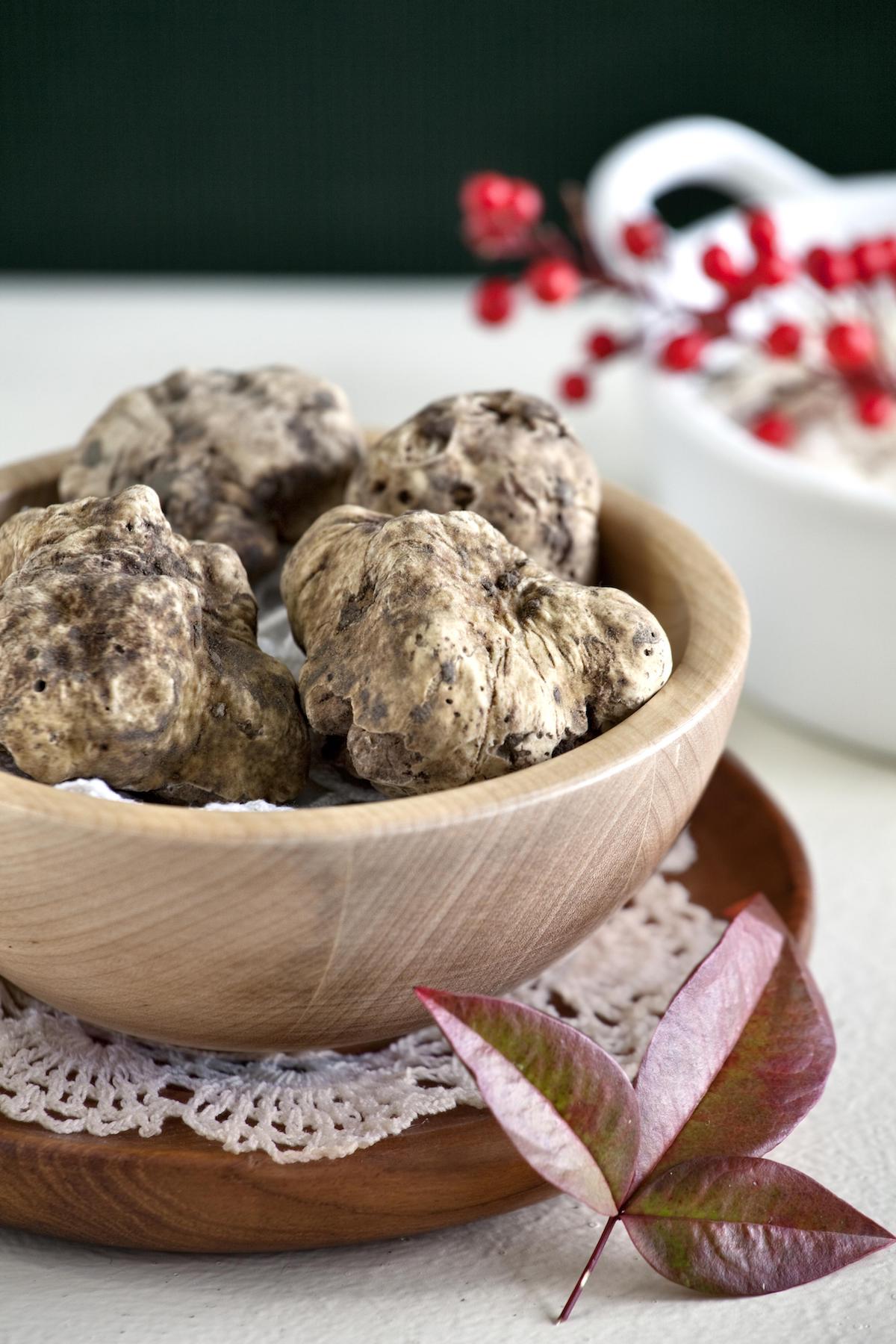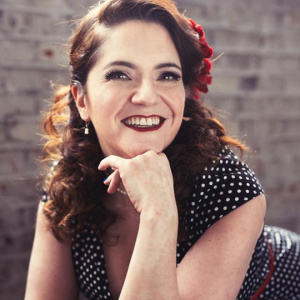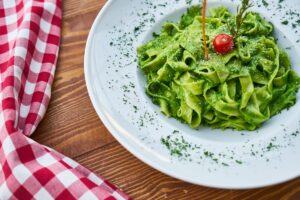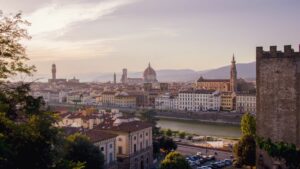Last Updated on November 22, 2025 by Emma Fajcz | Published: September 27, 2022
For all its well-deserved history and art accolades, Italy is a land of festivals. Regardless of where in Italia your travels take you, and when you choose to visit, chances are that you’ll find a local festival to attend.
Festivities are diverse; they can be centered around the celebrations of traditional dishes, religious holidays, or momentous events in history. And Tuscany is no exception. From cheese-rolling competitions in Pienza to exploding cart celebrations in Florence, the Toscana region offers visitors much to experience.
Check out these 10 must-visit festivals in Tuscany and join in on the celebrations!
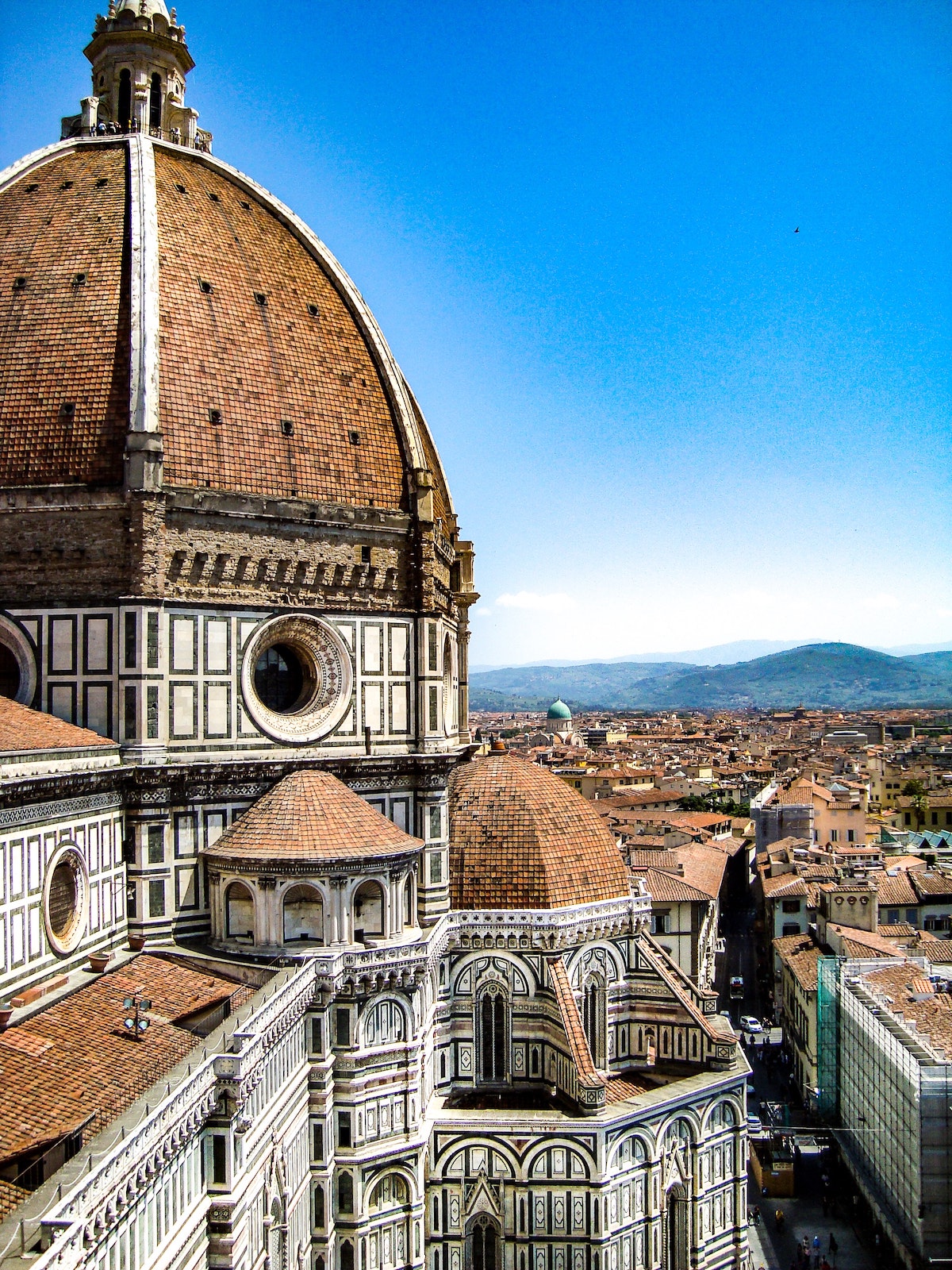
Il Palio (Siena)
If you’ve heard of one Tuscan festival, it’s most likely Siena’s Palio. This medieval horse race around the Piazza del Campo takes place twice each summer — once in July, and once in August.
Riders represent each neighborhood, known as a contrada, and attempt to stay on their mounts as they ride bareback, while galloping around the piazza, which gets packed with spectators.
Before each race, there’s a colorful parade of flag throwers and musicians, who each wear the insignia of their contrada. And after, the day usually concludes with outdoor feasts, which tend to be particularly lively in the winning neighborhood. Almost anywhere you go for a meal in the historic center though, is likely to feel pretty festive.

Scoppio del Carro (Florence)
Easter is one of the biggest Italian holidays of the year. What may surprise you though, is the way Florence kicks off Easter Sunday: With the Scoppio del Carro, or Explosion of the Cart.
On Easter morning, an ornate 30-foot-tall cart (which has been used for the past 500 years) gets covered in fireworks and is pulled into the Duomo square by a team of white oxen and a procession of locals in 15th-century costumes. It’s then dragged into Florence’s cathedral, where it gets connected to a metal cable that’s linked to a colombina (small metal dove) on the altar of the Duomo, which features a built-in fuse.
At the end of the service, Florence’s cardinal lights the short circuit and sends the dove racing along the cable to the cart, where it sets off a fantastic display of fireworks and colorful smoke.
The dove is a well-known religious symbol, and prevalent throughout Easter festivities in Italy. Along with the rocket colombina, Florentines celebrate the holiday with colomba pasquale, a dove-shaped cake that’s studded with bits of candied orange peel and topped with sugar and slivered almonds.
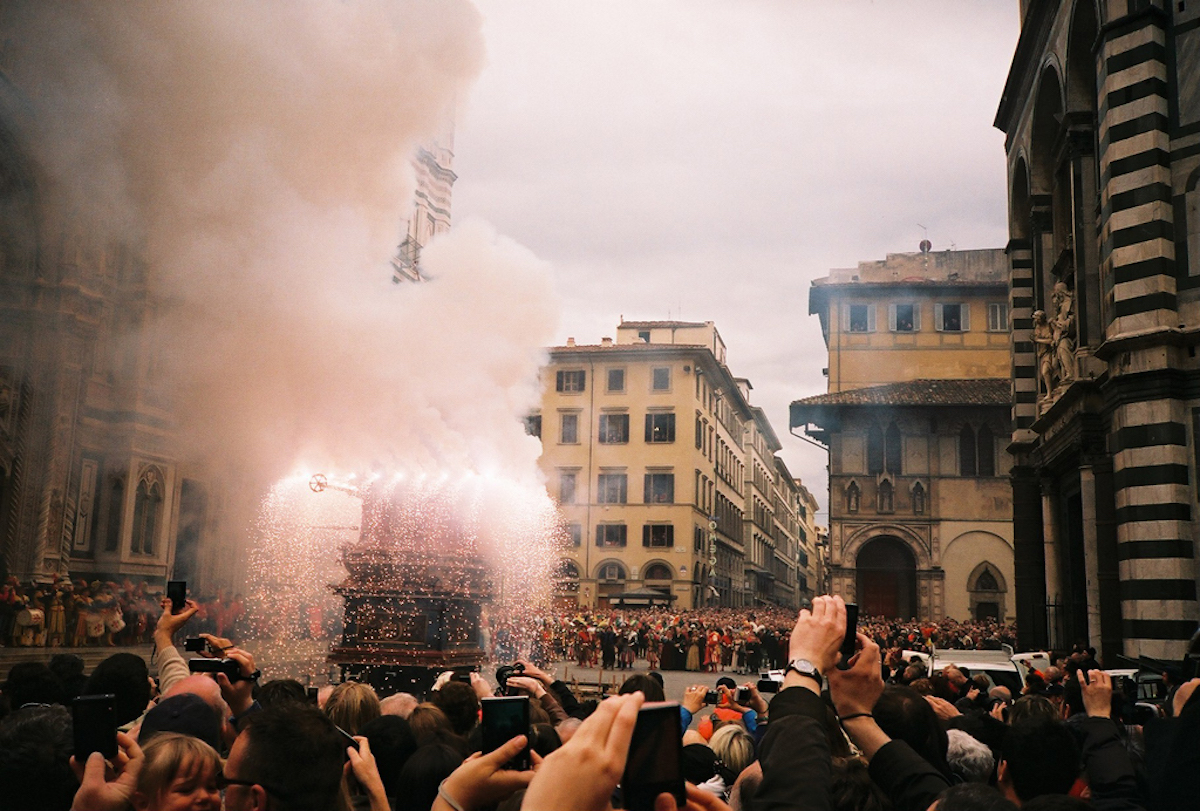
Carnevale (Viareggio)
While Venice may be the first city that comes to mind when talking about the famous Italian Carnevale celebrations, the one in Viareggio is also extremely popular.
Every year, before Lent, there are Carnevale festivities all over Italy that involve ornate masks and costumes — which you’ll also see in Viareggio. But what makes Viareggio’s celebrations different is its parades, which feature giant papier-mâché figures that lampoon a variety of celebrities, politicians, and professional athletes.
Carnevale in Viareggio is a month-long party; there are numerous parades hosted throughout February, which is a tradition that has been around since 1873.
Insider Tip: Try cenci, a local Carnevale favorite which consists of sweet deep-fried pieces of dough dusted with powdered sugar.
Gioco del Cacio al Fuso (Pienza)
In some parts of Italy, you can ignore the old warning that says not to play with your food — so long as the food in question is part of an annual festival. In Pienza, a town known for its pecorino cheese, that festival is the Gioco del Cacio al Fuso, or simply the “cheese rolling game.”
Six teams, each representing Pienza’s contrade, play a game that resembles Italian bocce or its French counterpart, boules. They roll wheels of pecorino cheese towards the fuso, a wooden spindle at the center of the square. Not only do the wheels of cheese have to be closest to the spindle in order to win, but they also have to remain upright in order to count.
The game has taken place since the 16th century. Today it’s the main event after a week of festivities in September which celebrate Pienza’s prized pecorino, which includes dancing, an annual cheese-making competition, and opportunities to sample lots of tasty local fare.
Giosta del Saracino (Arezzo)
Arezzo is host to a historical festival twice every year, in June and September called Giosta del Saracino, or the Saracen Joust. This medieval jousting tournament takes place in the middle of Arezzo’s Piazza Grande, and kicks off with a parade and entertainers dressed in Medieval costumes.
Just like in Siena’s Palio, it’s a contest between the city’s neighborhoods (in this case, Arezzo’s four districts). The knights, also dressed in costumes, aren’t jousting, however — they take aim at a wooden figure and earn more points the closer they are to the center of their target.
The joust has been held consistently since the 16th century — mention of it even appears on Dante’s Inferno — and it’s Arezzo’s most popular annual festival.
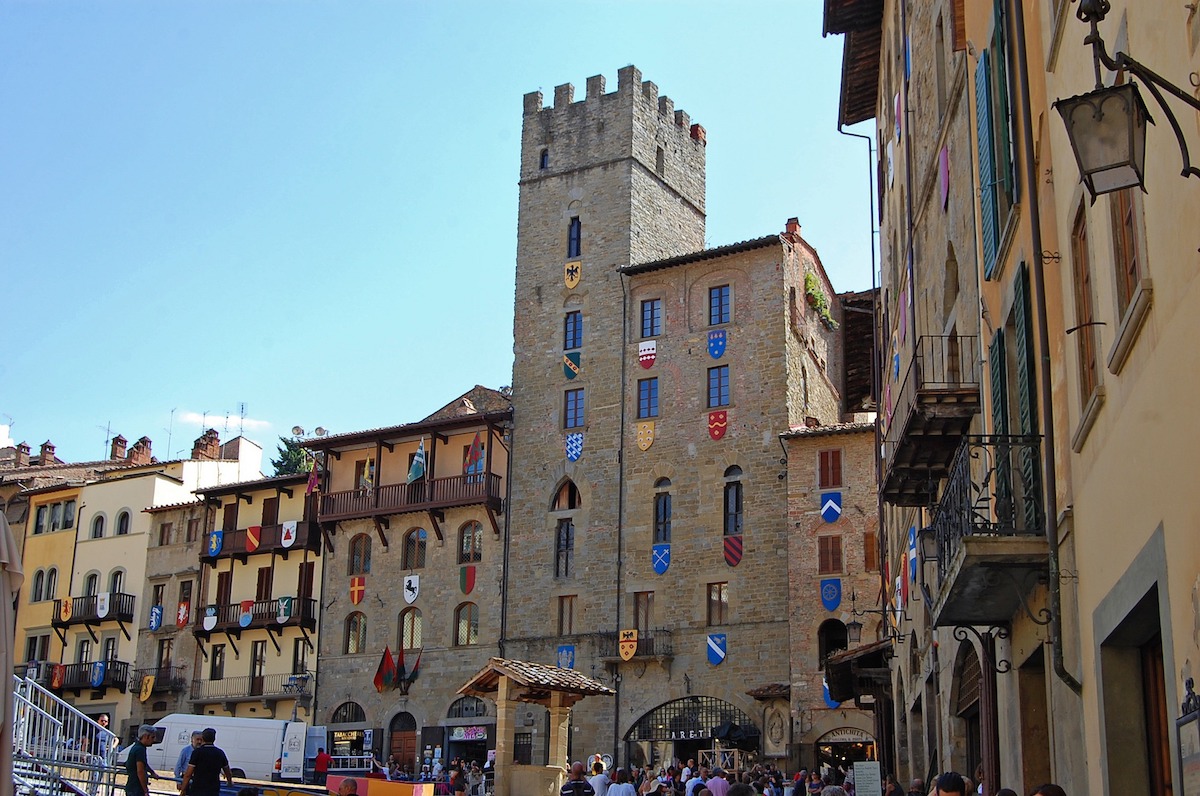
Calcio Storico Fiorentino (Florence)
Soccer is one of Italy’s most beloved pastimes, but Florence’s Calcio Storico is like no soccer game you’ve ever seen.
Calcio is the word Italians use for soccer, and the word storico means “historical.” This being said, the medieval sport is more akin to rugby or American football; it’s an incredibly physical game in which both feet and hands can be used, and points are scored by throwing the ball over the goal line.
Four teams, wearing medieval costumes representing different neighborhoods of Florence, compete in a Calcio Storico tournament in Piazza Santa Croce each June. In addition to contrada bragging rights, the winning team also receives a Chianina calf — the breed of cattle that produces the famous bistecca fiorentina.
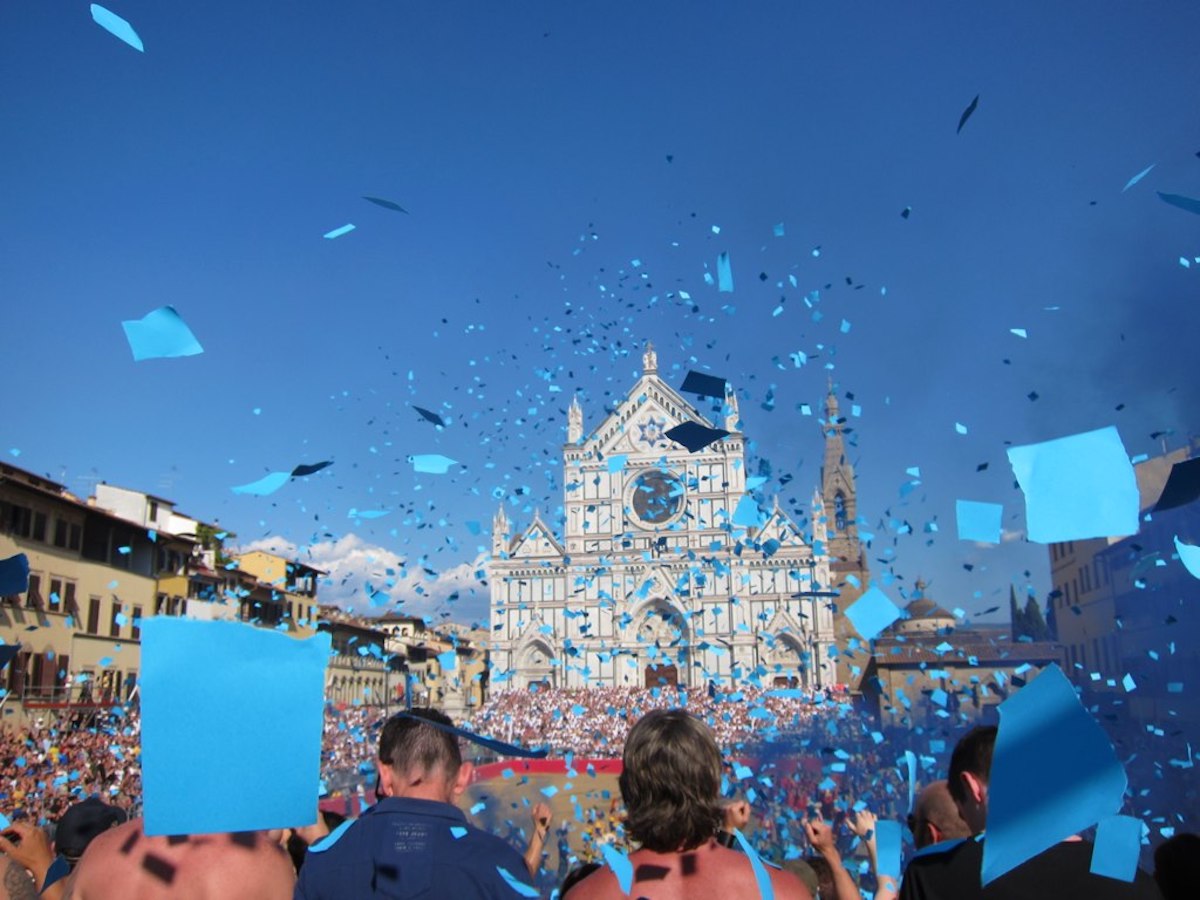
Insider’s Tip: If you come to the square to see a game of calcio, make sure to check out our top picks for nearby Santa Croce restaurants!
Bravio delle Botti (Montepulciano)
While Pienza plays with its food, Montepulciano plays with its wine. The Bravio delle Botti festival, held each August, is a race in which contestants must roll a wine barrel through the town’s streets to reach Piazza Grande.
There are eight teams, each of which represent Montepulciano’s eight contrade, with two runners apiece. The barrels weigh in at 80 kg (more than 176 pounds) and the course covers 1,800 meters (a little more than a mile). What’s more, the route is almost entirely uphill.
Wine barrels weren’t designed for this, of course, so the challenge isn’t just to get to the finish line first — it’s also to keep your barrel from rolling off the route.
The race has only been going on since the 1970s, but it’s designed to honor a historic Montepulciano horse race that used to celebrate the town’s patron saint at the end of August. The whole week leading up to the race is a festive time of medieval costume parades and entertainers in the public squares. And of course, there’s an outdoor feast held to conclude the celebration.
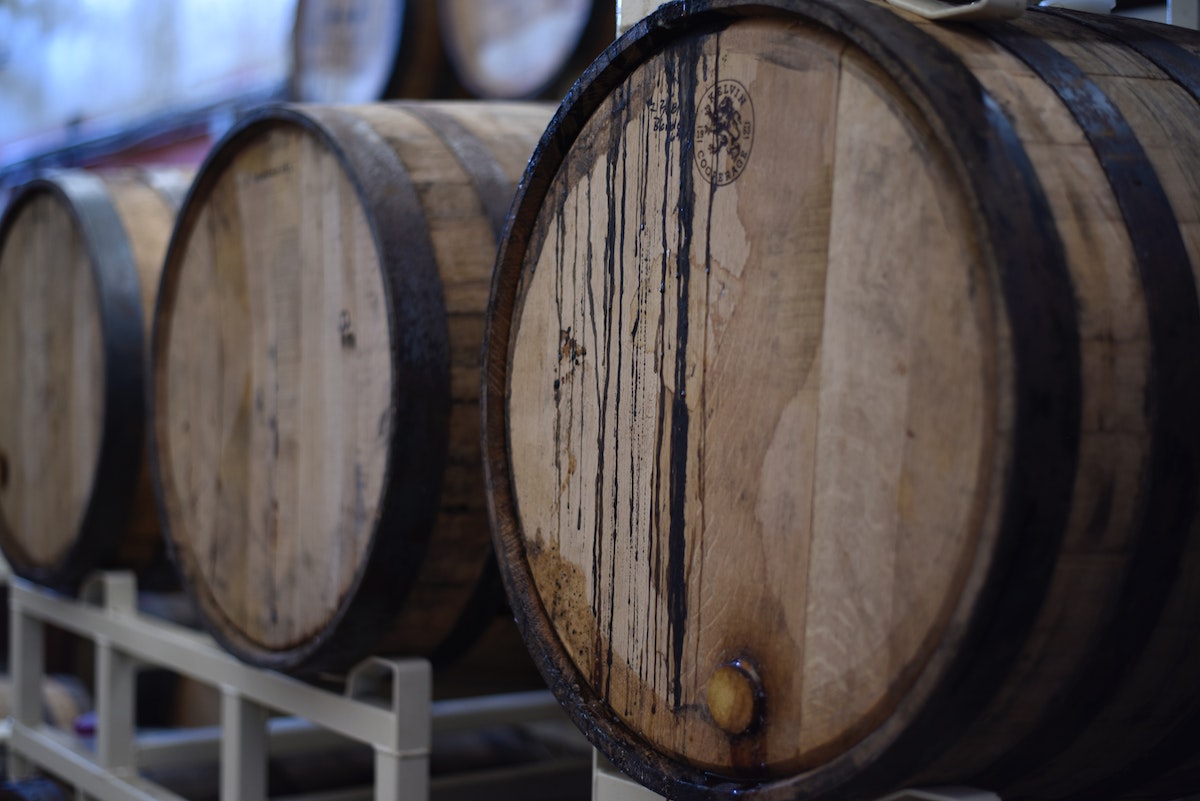
Il Gioco del Ponte (Pisa)
Pisa’s annual Gioco del Ponte, or “Battle of the Bridge,” is sometimes described as a tug-of-war — but, in this case, it involves pushing instead of pulling.
Each June, this battle pits neighborhoods on opposite sides of the Arno River against one another in a series of games to determine one overall victor. A heavy iron cart is positioned on one of Pisa’s many bridges, the Ponte di Mezzo, and fitted onto railings so that it can slide back and forth. Each team pushes the cart toward the other team’s side to win, a nod to military campaigns in which armies would advance to capture the enemy’s flag.
For reasons that aren’t entirely clear, participants have dressed in 16th-century Spanish garb since the latter half of the 18th century; before the games begin, there’s also a parade of Pisans in similar costumes.
Insider’s Tip: Headed to Pisa? Bookmark our full guide on things to do in Pisa!
Luminaria di San Ranieri & Palio di San Ranieri (Pisa)
Every municipality in Italy celebrates its patron saint’s feast day, and in Pisa, celebrations for San Ranieri (Saint Rainerius) are spread over two events in June: the Luminaria and the Palio.
For the Luminaria, thousands of candles illuminate buildings on either side of the Arno River on the evening of June 16th, the day before San Ranieri’s feast day. There’s also a fireworks show.
Pisa’s version of a palio takes place on the water on June 17th, a tradition which has been around since the early 18th century. It’s a historical regatta which pays homage to Pisa’s nautical history; here, four teams row boats down the Arno (against the current) to reach another boat in the middle of the river. To win the race however, the designated climber on each boat has scaled a pole on the platform and grabbed the right flag.
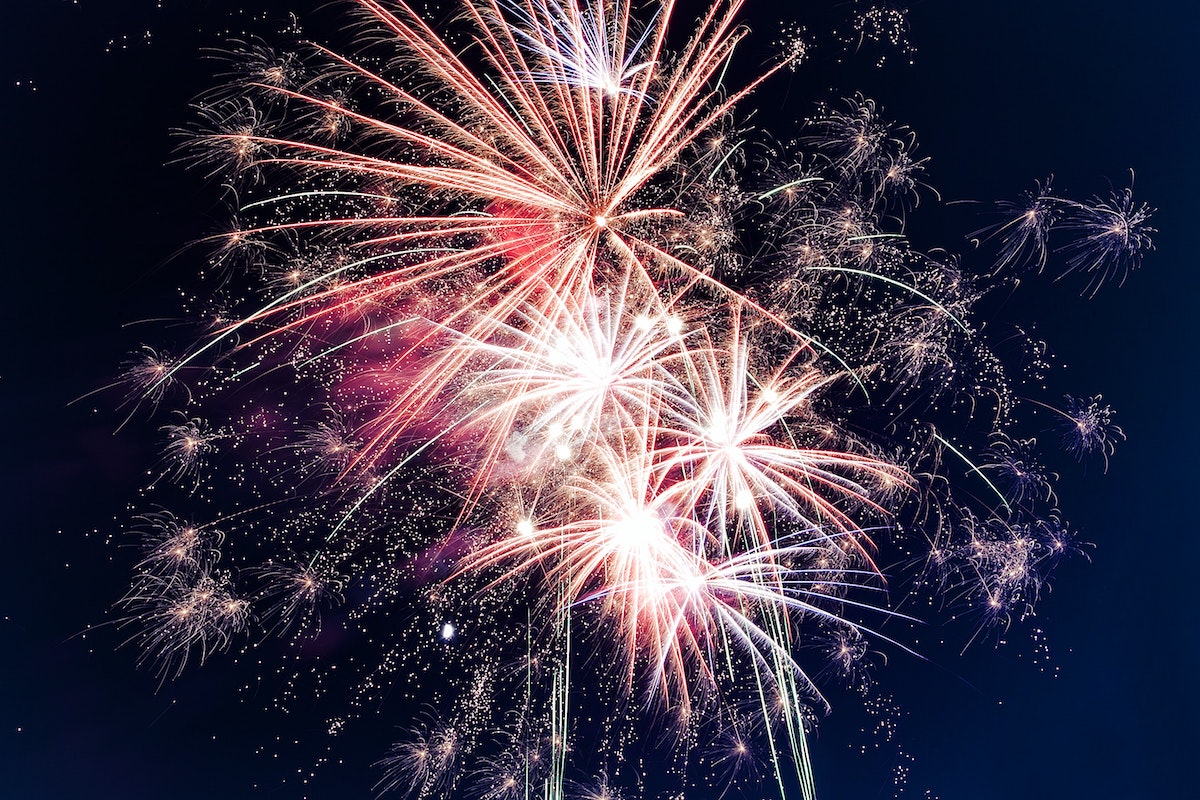
Mostra Mercato Nazionale del Tartufo Bianco (San Miniato)
Tuscany is well-known for its truffles, but even among aficionados, it’s the white truffle that’s particularly prized. And though there are many truffle festivals across Italy, one of the most notable is the Mostra Mercato Nazionale del Tartufo Bianco, or the National White Truffle Exhibition.
Held in San Miniato over three weekends in November, this event turns the city streets into a huge food fair. Booths and stalls offering all types of local foods line the streets, many of which make use of this prized white truffle. There’s a contest held during the exhibition for the largest tartufo bianco, with another award going to the oldest truffle hunter.
Insider Tip: Among the truffle-laden dishes you can try, look for truffle sausages and a deep-fried bread called ciaccioni.
